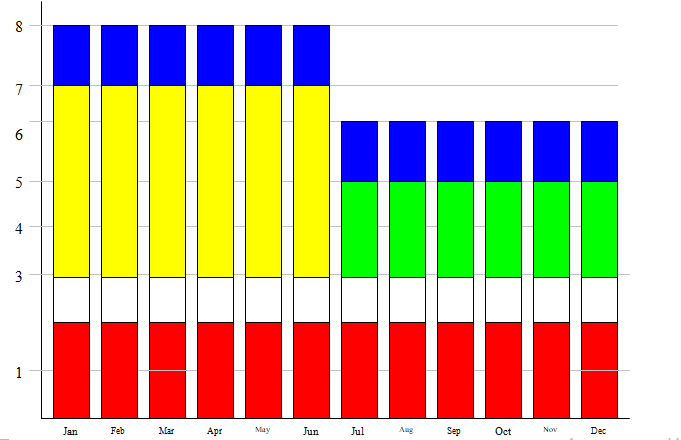Responsibility Assignment Matrix
Resource management remains one of the main undertakings for any project manager. As such a number of tools and techniques are presently available to enable the manager to plan and assign the available resources on the project and attain maximum productivity (Schwalbe, 2005).
The responsibility matrix (RAM) is a chart that is used to show who within the project team is responsible to what task. The matrix is more understandably used with the RACI chart to demarcate the responsibilities within a project. The responsibility assignment matrix (RAM) below has been drawn for the project under study here.
RACI Chart for the project
This is a responsibility, accountability, Confirmed and Informed chart showing how each of the team members within a project is involved in the project.
The RACI chart indicates that the project manager must be informed when all the activities of the project are scheduled to take place. The project manager will also be consulted on the preparation of on-site testing process and is accountable for the results of the analysis.
Legend:
- R= Responsibility
- A= Accountability
- C= Consultation
- I= Informed
A resource histogram for the project
The resource histogram graphically illustrates the resources as cumulative against time. From the histogram above, a cumulative human resource of 8 is needed for the first six months of the project. Thereafter, a cumulative human resource of 6 will be needed to complete the last six months of the year.

Legend:

Project conflict resolution process by collaboration
Human beings from the beginning of age show some distinct behaviour patterns whenever they are in groups or teams. Therefore managers or leaders of such groups or even the group members will benefit from study theories based on groups. This in turn will essentially help to uncover and understand people behaviour and group dynamics.
Group analysis or dynamics is beneficial in many ways and is applicable to education and even therapy (Bion, 1952). It is almost impossible for a normal human being to live in isolation which highlights the importance of society and groups in our lives. Ultimately the social dynamics occurring in groups after a time may vary between groups but also have some commonalities.
There are several stages in group development. These stages are characteristic of all groups regardless of age, culture or composition. The typical life cycle goes through forming in which case the team members are getting together, norming stage where members communicate and prepare appropriately for the purpose of the team which leads to the performing stage (Forsyth, 2009).
Conflict is a common occurrence during this exercise. As the team leader or project manager a number of considerations can be explored to resolve and manage conflict. In this case a conflict has been identified and a conflict resolution by collaboration is a suitable approach that can be applied here. There are basically seven steps that can be used to address this conflict.
Each of the aggrieved will need to state their issues. Once each of the conflicting team members has raised their issue, they can be allowed to explore each other’s point of view from an unbiased perspective (Thomas, 2002).
Each of their views can be further scrutinized to identify the underlying concerns while separating them from positions. As the leader articulate the positions, concerns and interests to each of the aggrieved members of the team. Help clarify the unclear areas of concern.
Determine a consensus where it now becomes our concern and not my concern. Once a collaborative view is reached for this issue, a collaborative solution can then be worked at where each of the team members gives their options base on the collaborative view.
Among these options a consensus can be reached on which options are the best. After collaboratively identifying the best options, an implementation plan can be established and implemented involving both team members.
References
Bion, R. W. (1952). Group dynamics: A re-view. International Journal of Psychoanalysis, 33(1), 235-247.
Forsyth, R.D. (2009). Group dynamics 5th ed. Belmont, California: Wadsworth Publishing.
Schwalbe, K. (2005). Information technology project management (6th ed.). Cambridge, Massachusetts: Course Technology.
Thomas, K.W. (2002). Introduction to conflict management: Improving performance using the TKI. Palo Alto, CA: CPP Inc.